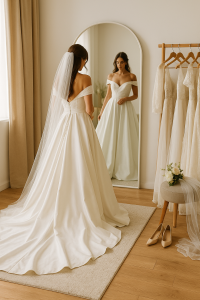Date: 23 Aug 2025
A wedding is one of the most special days in a woman’s life, and the dress is at the heart of this magical moment. Every bride wants to look stunning and feel confident, but to achieve that, the choice of the right size is essential. A wedding dress is not just a garment – it’s a symbol of love, style, and personality. And here comes the big question: how do you choose the right size wedding dress?
In this guide, we’ll cover how to take accurate measurements, what the sizes mean, how different cuts and fabrics affect the fit, and which mistakes to avoid when choosing your dream gown.
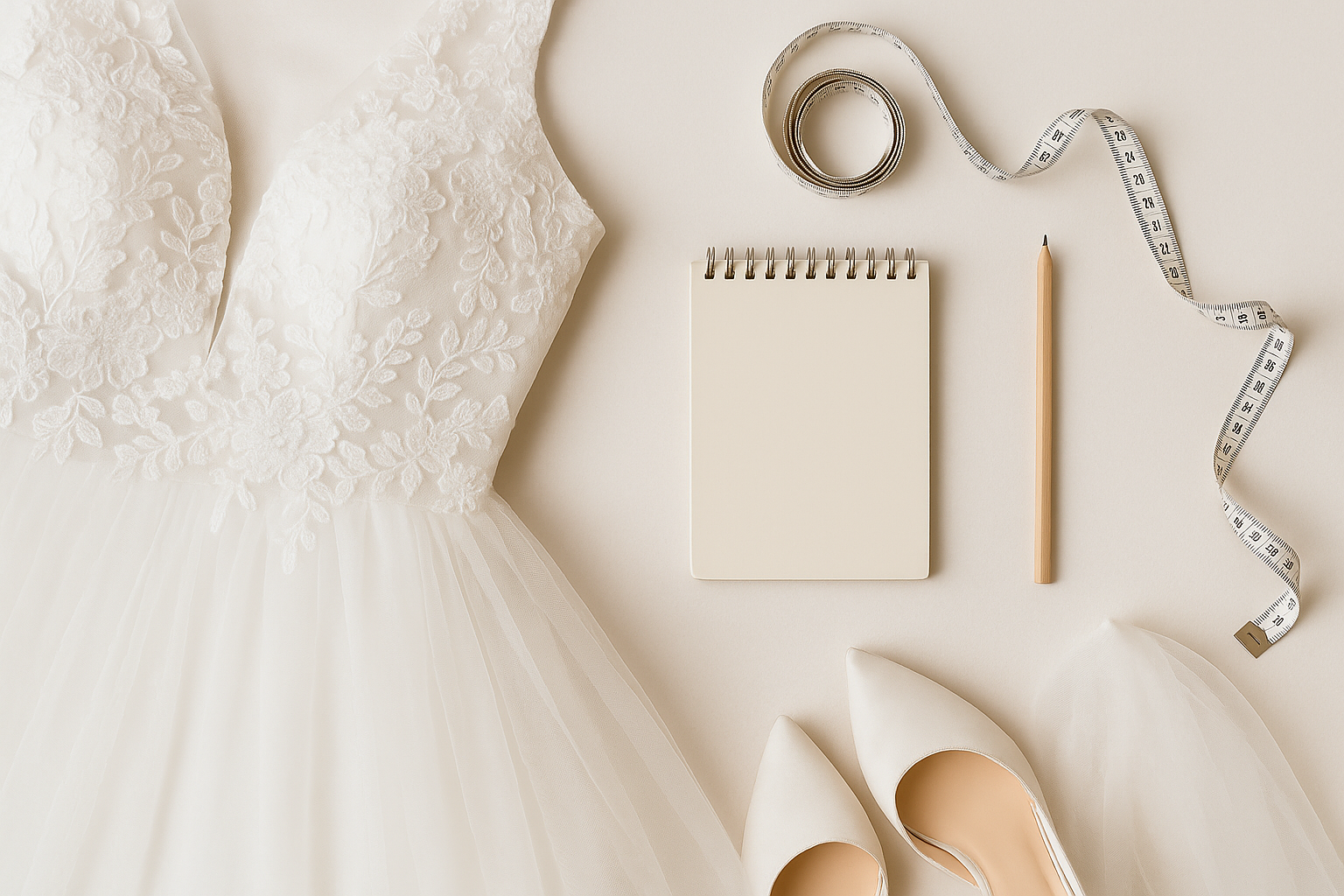
Why Size Matters So Much
Unlike everyday dresses, a wedding gown needs to fit perfectly. Here’s why:
-
You’ll wear it for many hours – comfort is essential.
-
The gown defines your figure – every detail needs to be in place.
-
The memories will remain in photos forever – your dress must look flawless from every angle.
The right size is a balance between elegance and comfort.
How to Take Accurate Measurements
Before you choose a wedding dress online or in a boutique, you need to know your exact body measurements:
-
Bust – measure around the fullest part of the bust, keeping the tape straight.
-
Waist – measure the narrowest part of the torso, just above the navel.
-
Hips – measure the widest part, usually across the buttocks.
-
Length – if the gown is floor-length, measure from the shoulder down to the floor while wearing the shoes you’ll have on the wedding day.
-
Arms and shoulders – important if the dress has long sleeves or exposed shoulders.
Tip: Have a seamstress or friend help you, as it’s easy to make mistakes when measuring yourself.
Standard Sizes vs. Made-to-Measure
In Europe, wedding dresses usually follow EU sizes (36, 38, 40, 42, etc.). These are associated with approximate bust, waist, and hip measurements.
-
EU 36 – XS
-
EU 38 – S
-
EU 40 – M
-
EU 42 – L
-
EU 44 – XL
But keep in mind: wedding dresses almost always need alterations. Even if you choose the right size, your dress will likely need adjustments to fit your body perfectly.
Made-to-measure gowns are the most accurate option, but even ready-to-wear dresses can look flawless after professional tailoring.
How the Cut Affects Your Size Choice
Not all wedding dresses fit the same – the cut plays a huge role:
-
A-line – flares gently from the waist down. A forgiving cut that suits most body types.
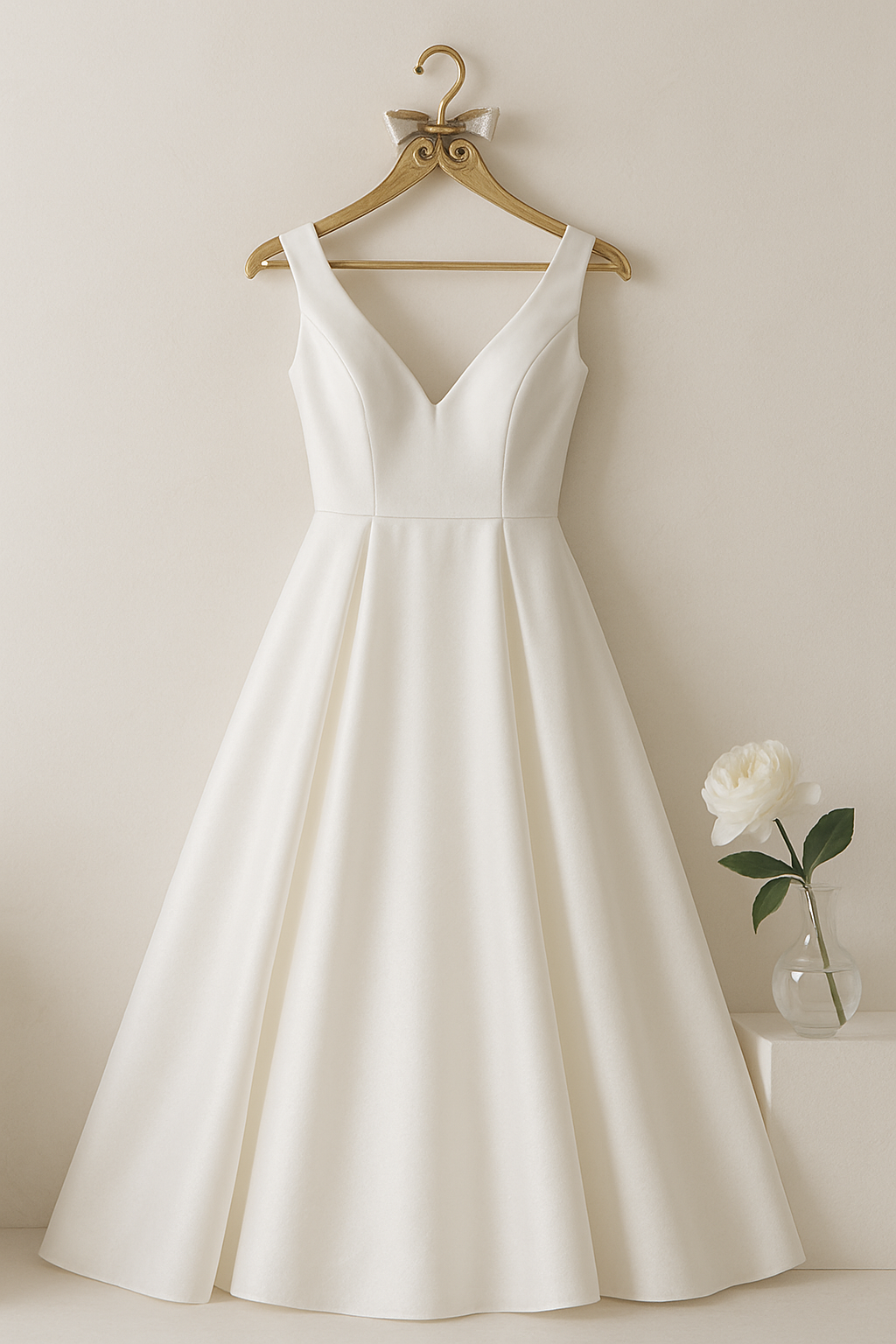
-
Princess cut – fitted bodice that flows smoothly. Requires accuracy in bust and waist.
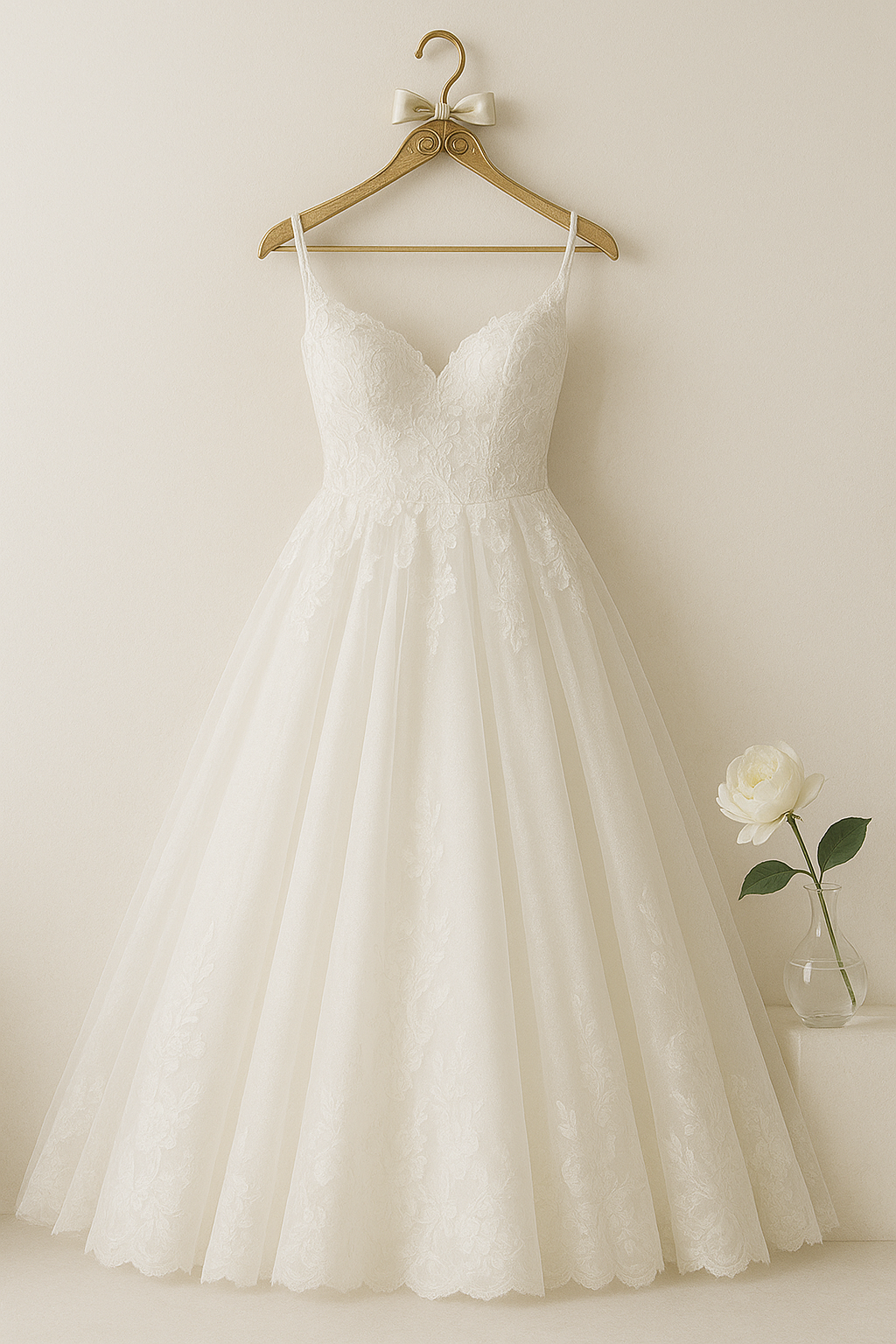
-
Mermaid – tight-fitting down to the knees before flaring out. Size must be exact.
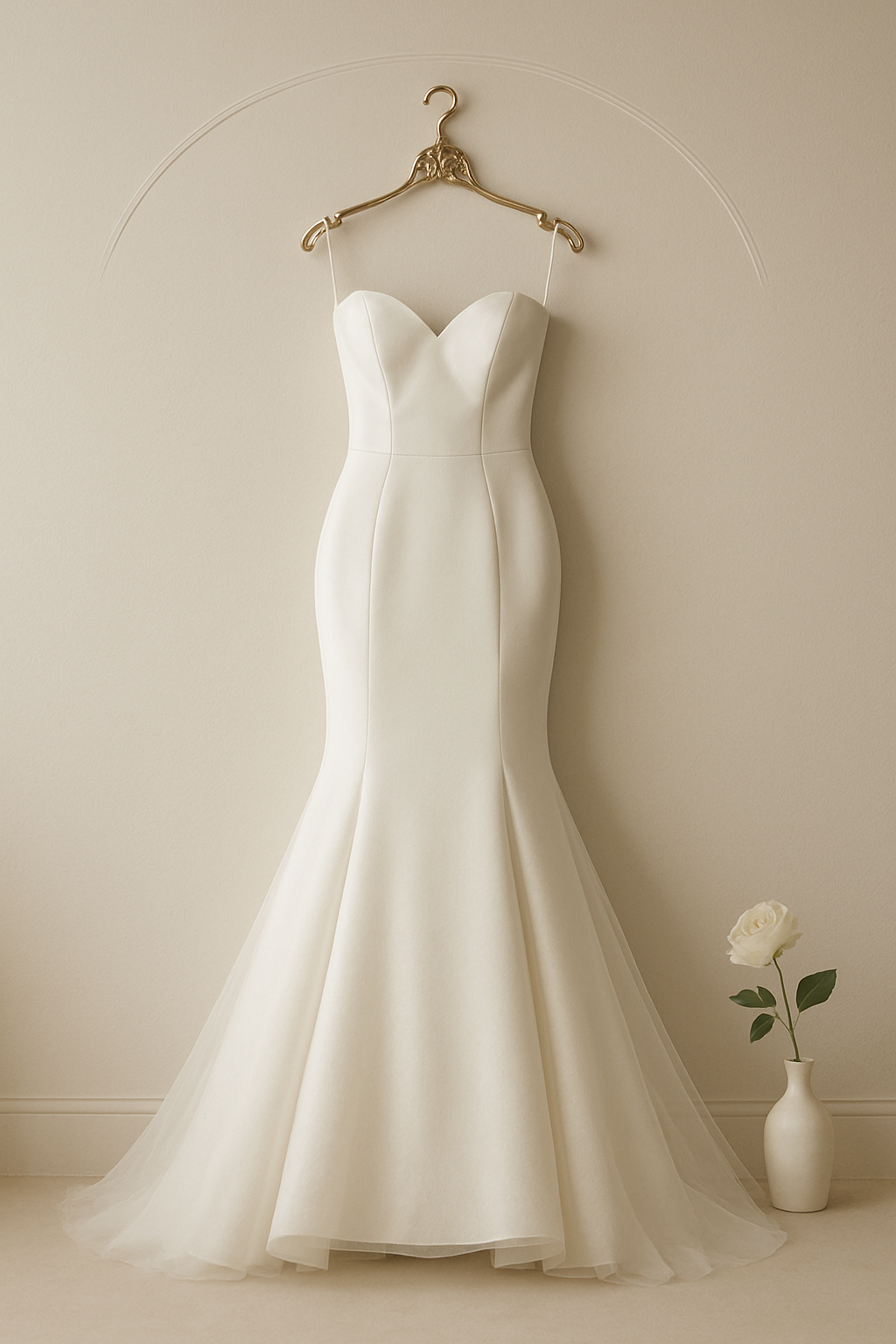
-
Ball gown – voluminous skirt with a structured bodice. Allows more freedom in the hips but demands precision in the upper body.
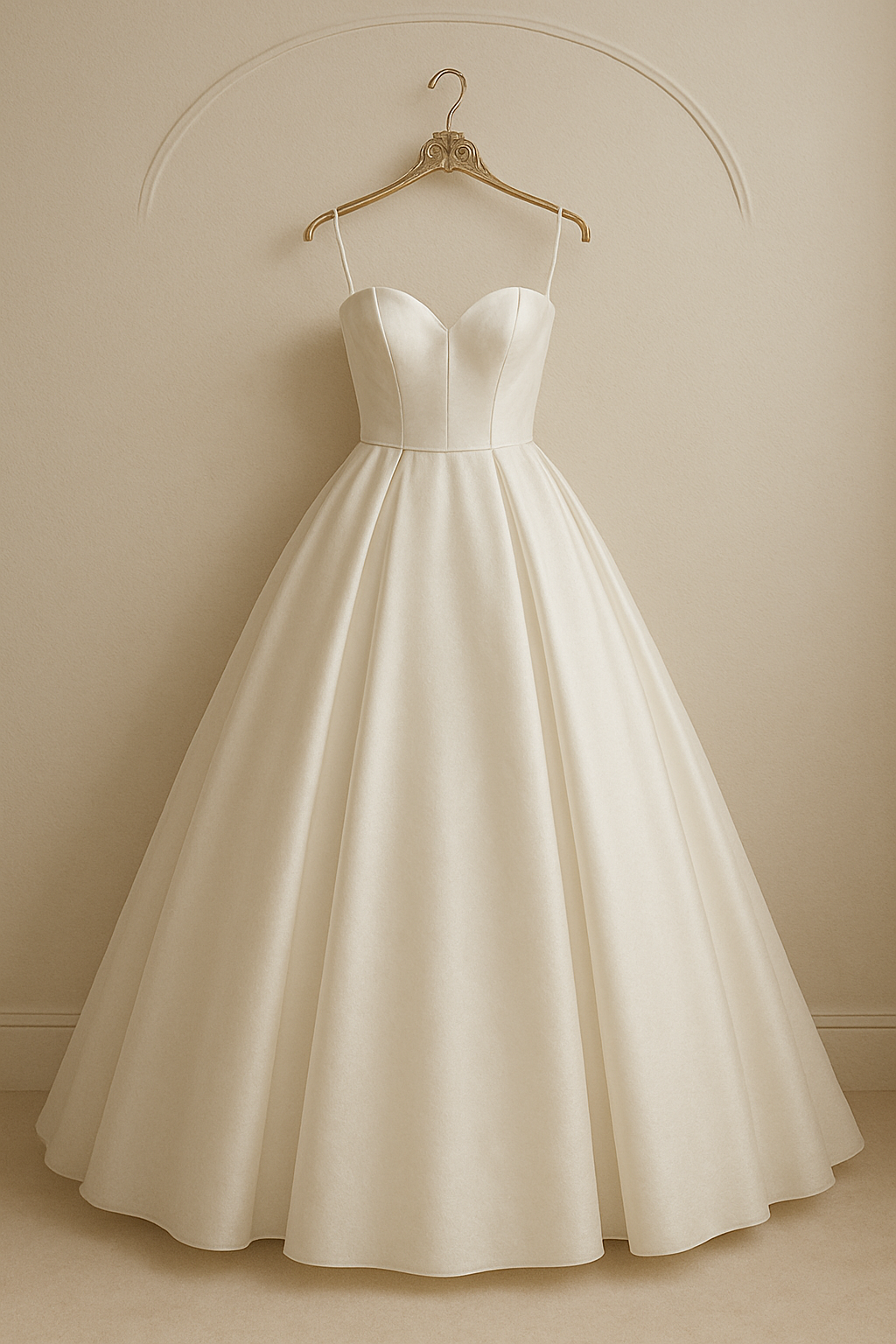
If you’re unsure, A-line or princess cuts are the safest choices – they’re easier to adjust.
Fabrics and Their Role
The fabric can change the feel of the gown, even if the size is technically correct.
-
Satin – heavy, smooth, non-stretch. Requires a precise fit.
-
Lace – slightly stretchy, adapts well but shows the body’s natural lines.
-
Tulle – light and airy, adds volume and hides the hips and legs.
-
Crepe, chiffon – flowy fabrics that drape softly and are more forgiving.
What If You’re Between Two Sizes?
One of the most common dilemmas is being between two sizes.
Golden rule: always choose the larger size.
It’s much easier for a seamstress to take a dress in than to let it out.
The Role of Alterations
Even high-end gowns usually need tailoring. Common adjustments include:
-
Taking in the waist for a slimmer silhouette.
-
Shortening the length to match your height and shoes.
-
Adjusting the bust or straps to prevent gaping.
Don’t stress about this – alterations are a normal part of the process.
Common Mistakes Brides Make
-
Buying a dress that’s too small in hopes of losing weight. This often leads to unnecessary stress.
-
Relying only on the label size without taking actual measurements.
-
Not trying the dress with the right shoes and lingerie – both affect the fit.
-
Choosing the wrong cut for your body shape.
-
Not leaving time for alterations – ideally, the gown should be bought at least 6 months before the wedding.
Tips by Body Type
-
Tall brides – ball gowns or dresses with more volume balance the silhouette.
-
Petite brides – high-waisted or shorter-front gowns elongate the figure.
-
Busty brides – V-necklines or structured bodices provide support.
-
Brides with wider hips – A-line or ball gowns flatter and balance proportions.
-
Very slim figures – gowns with volume or embellishment add softness.
FAQ – Frequently Asked Questions
What if I lose or gain weight before the wedding?
Schedule final alterations 1–2 weeks before the big day – this is standard practice.
How early should I buy my dress?
Ideally 6–9 months in advance, to allow time for shipping and tailoring.
Can I buy a dress online without trying it on?
Yes, if you know your exact measurements and are prepared for alterations.
Should I consider my shoes when choosing size?
Absolutely – heel height changes the dress length.
Conclusion
Choosing the right size wedding dress may seem overwhelming, but with proper preparation it’s completely manageable. Take accurate measurements, consider the cut and fabric, and plan for small alterations.
Remember: size is just a number. What truly matters is how you feel in your gown – confident, beautiful, and special.
On your wedding day, the dress is the perfect frame for your joy and happiness – and with the right fit, you’ll shine effortlessly.

